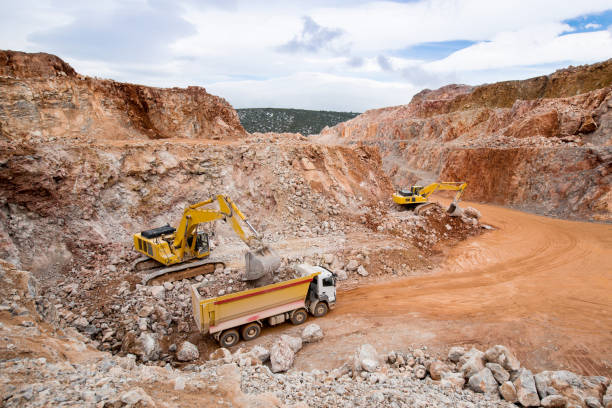In the last couple of years, sustainable stone practices have been one of the key focus areas in construction and the design industries. These practices have been seen to offer great environmental benefits while still meeting the increasing demand for natural stone products. With growing concerns over climate change and exploitation of natural resources, stakeholders in the industry are increasingly under pressure to adopt sustainable methods that could effectively reduce their environmental footprint. This is fundamental in establishing a long-term ecological balance for the benefit of the current and future generations.
Full Understanding of Sustainable Stone Practices
Sustainable stone practices represent quarrying, processing, and use of environmental-friendly stone materials that reduce potential harm to the environment. Such practices include effective management of resources, waste minimization, and energy efficiency for eco-friendly sourcing, allowing for the assurance of natural stone as a eco-friendly material.

Environmental Benefits of Sustainable Stone Practices
Several environmental benefits exist due to adopting the practice of sustainable stone in use, among which are the following:
- Carbon Footprint Reduction
The extraction and traditional processing of stone may cause extremely high carbon emissions due to the operation of heavy machinery, transportation, and energy-intensive manufacturing. Sustainable practices involving using energy-efficient equipment and optimization of transportation routes to minimize GHG emissions are ways of practicing low carbon footprints.
- Efficiency in the Use of Resources
Sustainable stone practices revolve around the core principle of gaining maximum efficiency in the use of all available materials to drastically reduce waste. The various techniques involved, such as precision cutting for better and more efficient use of the stone, recycling of stone leftovers that may otherwise be thrown away, and even using by-products from quarry extraction processes, are all very important in pointing toward an effective approach to using resources efficiently. This overall plan greatly reduces the need for excessive exploitation of natural resources.
- Natural Habitats Protection
The extraction processes from quarrying can cause massive disturbances to local ecosystems, leading to the destruction of habitats and a potential great loss of biodiversity. Sustainable practices can help minimize the negative impacts and include site management, careful land restoration, and adequate environmental impact assessment studies. This will help in the protection of surrounding ecosystems and the wildlife that inhabits them.
- Waste Reduction and Recycling
Up to a great extent, stone waste can be recycled and repurposed for many applications, including aggregate for construction, landscaping, or architectural design. Recycling reduces landfill waste and supports a circular economy in the stone industry.
- Water Conservation
The processing of stone typically involves large volumes of water in cutting, polishing, and cleaning. Sustainable operations put in place water recycling systems, filtration technologies, and closed-loop processing to reduce water consumption and lower pollution.
Key Sustainable Practices in the Stone Industry

Adoption of sustainable stone practices involves some key initiatives that facilitate environmental responsibility, including:
- Eco-Friendly Quarrying Techniques
- Extracting with low-impact methods to reduce disturbance of the land
- Dust suppression systems for better air quality
- Regular environmental audits to monitor and mitigate impacts
- Energy-Efficient Processing Methods
- Use of solar or renewable energy sources for stone processing plants
- Investment in modern machinery with lower energy consumption
- Optimizing production schedules to significantly reduce energy waste in the process is an essential strategy.
- Sustainable Transportation Solutions
- Sourcing stone from local suppliers to effectively minimize transportation-related emissions, which contribute to environmental degradation.
- Utilizing fuel-efficient vehicles or electric vehicles for delivery purposes to lessen the carbon footprint associated with transport.
- Consolidating shipments in a thoughtful manner to substantially reduce fuel usage while also lowering logistics costs effectively.
- Ethical Sourcing and Certification
- Forming partnerships with quarries that strictly adhere to ethical labor practices and environmental standards to ensure responsible sourcing.
- Actively seeking certifications such as ISO 14001, which focuses on environmental management and best practices in sustainability.
- Educating customers extensively about the numerous benefits of choosing sustainable stone options to promote informed decision-making.
The Role of Sustainable Stone in Green Building Projects is critical, as it directly contributes to environmentally responsible construction practices.
Green building initiatives, such as LEED (Leadership in Energy and Environmental Design) and BREEAM (Building Research Establishment Environmental Assessment Method), encourage the use of sustainable materials, including stone. Sustainable stone helps in getting certification points for some of the factors below:
- Low environmental impact materials
- Improved indoor air quality due to non-toxic properties
- Durability and long life span, with low maintenance requirements

Challenges and Future Trends of Sustainable Practice in Stone
While it brings many benefits, the challenges in implementing sustainable stone practices are also many. These range from high up-front costs, which are sometimes prohibitory, to a lack of awareness by consumers and businesses of the need for sustainability in this sector, to various regulatory hurdles that may make the adoption of these practices difficult. Despite all these obstacles, the future of sustainable stone is amazingly bright.
The following emerging trends in the industry underpin this positive outlook:
1-Increased adoption of state-of-the-art digital technologies that enable more accurate cutting of stones and help in waste reduction.
2-Continued development of environmentally friendly adhesives and finishes that reduce environmental damage and enhance sustainability.
3-Better collaboration among different industry stakeholders to establish stronger global sustainability standards that can guide practices across the board.
How Businesses Can Adopt Sustainable Stone Practices
Here are some ways the stone industry can implement sustainability in their operations:
- Invest in Sustainable Technology: The company should upgrade its machinery and processing methods to reduce environmental impacts.
- Educate Customers: The benefits of choosing sustainable stone should be displayed to the customer in the marketing materials.
- Apply the Principles of Circular Economy: Recycling programs and good waste material recovery can be instigated.
Conclusion
Sustainable stone practices are an important approach that is not only beneficial to the environment but also a vital factor in creating a more responsible and progressive industry landscape. Through active adoption and application of eco-friendly practices, the stone industry can greatly minimize its ecological footprint, thereby preserving valuable resources while at the same time supporting broader objectives of global sustainability. With the increasing demand for sustainable construction materials, companies that incorporate sustainability into their operations and strategies will be well placed as leaders in the industry, with a competitive advantage that can drive innovation and shape positive change.
